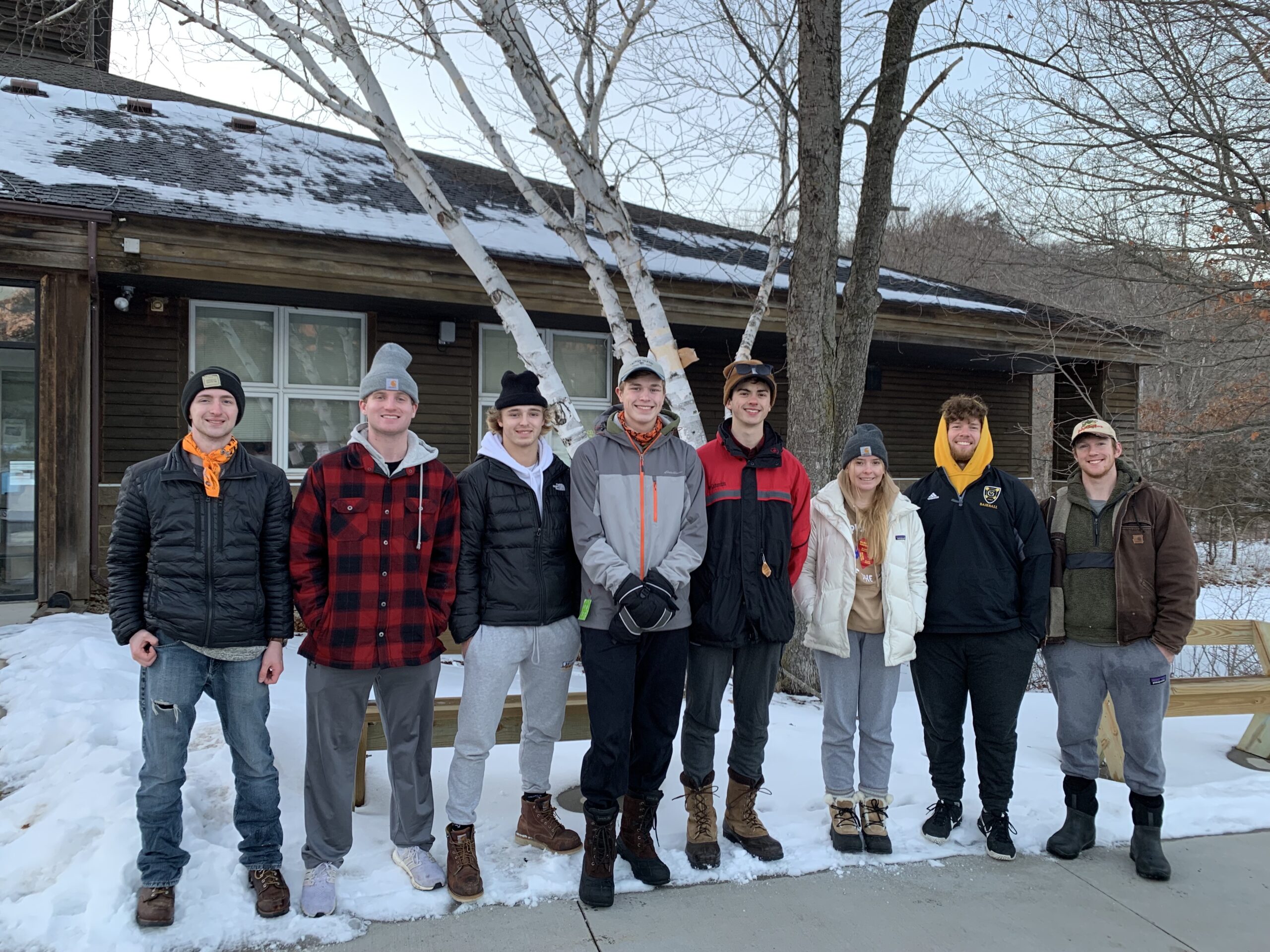When biology lab instructor Eric Elias takes his students in Minnesota Aquatic Stewardship out fly fishing, his lesson plans aren’t written down on paper. Instead, they’re unearthed as he picks up a rock in the middle of a flowing stream, where a microcosm of aquatic organisms is waiting to be discovered. What used to be just diagrams on PowerPoint slides suddenly wriggle in the palms of students’ hands, and then “it starts to click.”
“It’s a magical time down there,” said Elias, who taught the January Term course for the eighth time in 2022.

The class is a continuation of Elias’ lifelong passion for fish, spanning childhood pets, fishing with family, collecting specimens on the Mississippi River as an undergrad, and graduate research on the impacts of environmental estrogens. In the lecture portion of class, he teaches students about the interwoven pieces of river ecology, with a focus on aquatic insects. For scientists, they’re valuable indicators of water quality, and for fly anglers, they’re the perfect bait.
Before going fly fishing, students learn how to tie their own flies in ways that emulate the aquatic creatures they’ve studied. For hands-on learners, it’s a chance to use their creativity to think critically about how the parts of an insect make it uniquely suited to its environment.
“Creating these flies is surprisingly similar to an art class,” said Jayne Mapstone ’25. “I’m really interested in art, and this class is a nice break from tradition.”

Students tested the effectiveness of their creations during a trip to Whitewater State Park, where the day’s objective encompassed more than catching fish. “I’ve had students who don’t spend much time fly fishing, and that’s totally fine,” said Elias. “What they do end up doing is wandering around on the stream banks, flipping over rocks, and looking at stuff. Everyone is able to take a little something out of the experience, and I can’t tell them what that will be. They have to find that for themselves.”
In addition to putting knowledge from lectures into practice, students benefit from the trip on a personal level. For some, fly fishing is a chance to clear their minds and take a break from their busy schedules. For others, it’s about discovering the great outdoors. “I had one student tell me, ‘I haven’t spent this much time outside in a single day in my entire life,’” said Elias. “That’s kind of a big deal.”
For Elias, January Term marks a unique time for students to push boundaries through experiential learning and cross-disciplinary connections that exemplify the liberal arts experience. This year, that interdisciplinary piece has been brought to the forefront through partnering with another somewhat unexpected January course.
Museums Matter, taught by biology instructor Katie Peterson ’10, and Minnesota Aquatic Stewardship shared joint readings and discussions of The Feather Thief by Kirk Wallace Johnson, as part of a grant through the John S. Kendall Center for Engaged Learning. Detailing the real-life story of a man who stole precious bird specimens from the British Museum of Natural History to use for tying his flies, the book formed the perfect link between the two courses. In addition to group discussions of the book, students in Minnesota Aquatic Stewardship were able to show their counterparts how to tie flies, and in turn observed the process of preserving birds for museum collections and exhibits. A display case in Nobel Hall features some of their collective work.
The idea to have both classes engage in a shared book came from the College’s Reading in Common Program. To Elias, the partnership represented “a small microcosm of Gustavus, and how the liberal arts in general tends to work.”
The students themselves are a microcosm of Gustavus, with majors ranging from environmental science and geology to economics and nursing. While their semester schedules might not hold space for a course devoted to fly fishing, January Term offers a yearly chance to pursue a new, interesting topic with a close-knit cohort.
“During the regular part of the year, we’re so dispersed,” said Elias. “But here there’s a cohesive constantness. We’re all working on similar things, we get to know each other a little better, and we get to dive in a little deeper. It’s super rewarding.”
Regardless of his students’ future careers, Elias hopes that the class will instill a sense of stewardship for natural resources and a love for the great outdoors — the same love that keeps him looking forward to January year after year.
“Three weeks ago, my daughter Iris asked me, ‘Do you think you’re doing your life’s work teaching here at Gustavus, particularly this J-Term course?’
“My answer was instant: ‘Definitely!’”

Leave a Reply